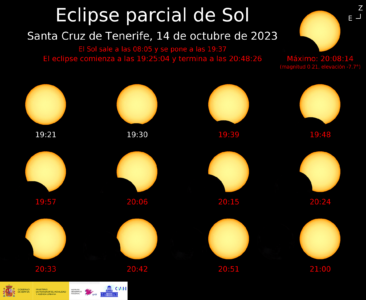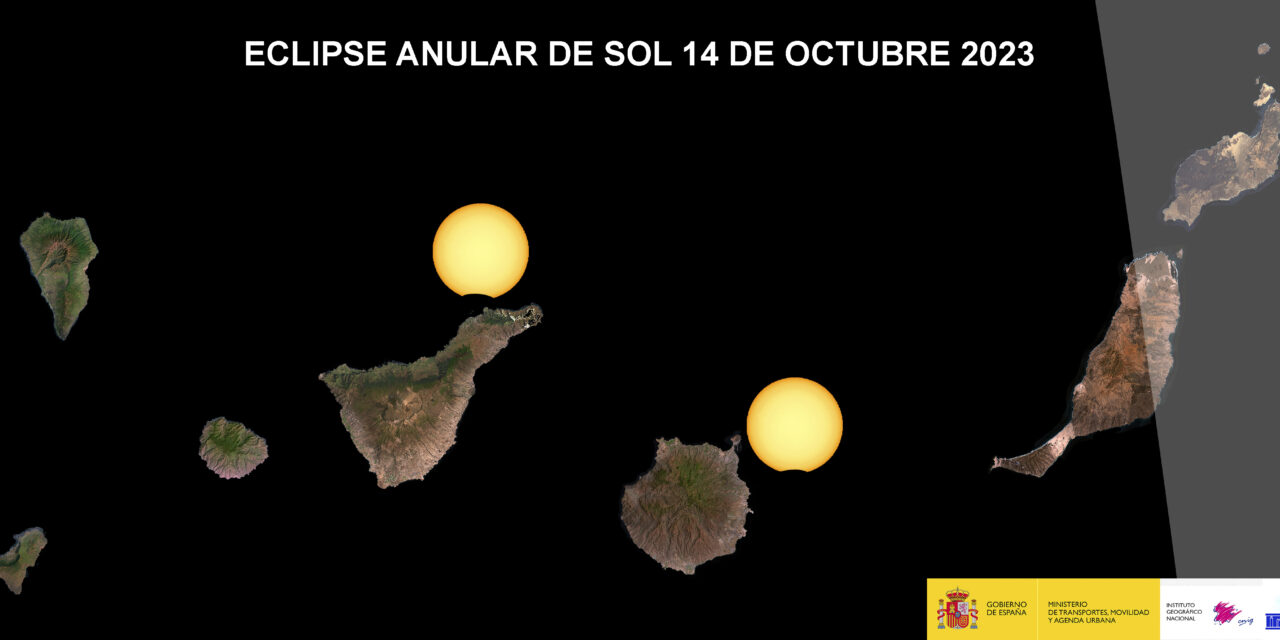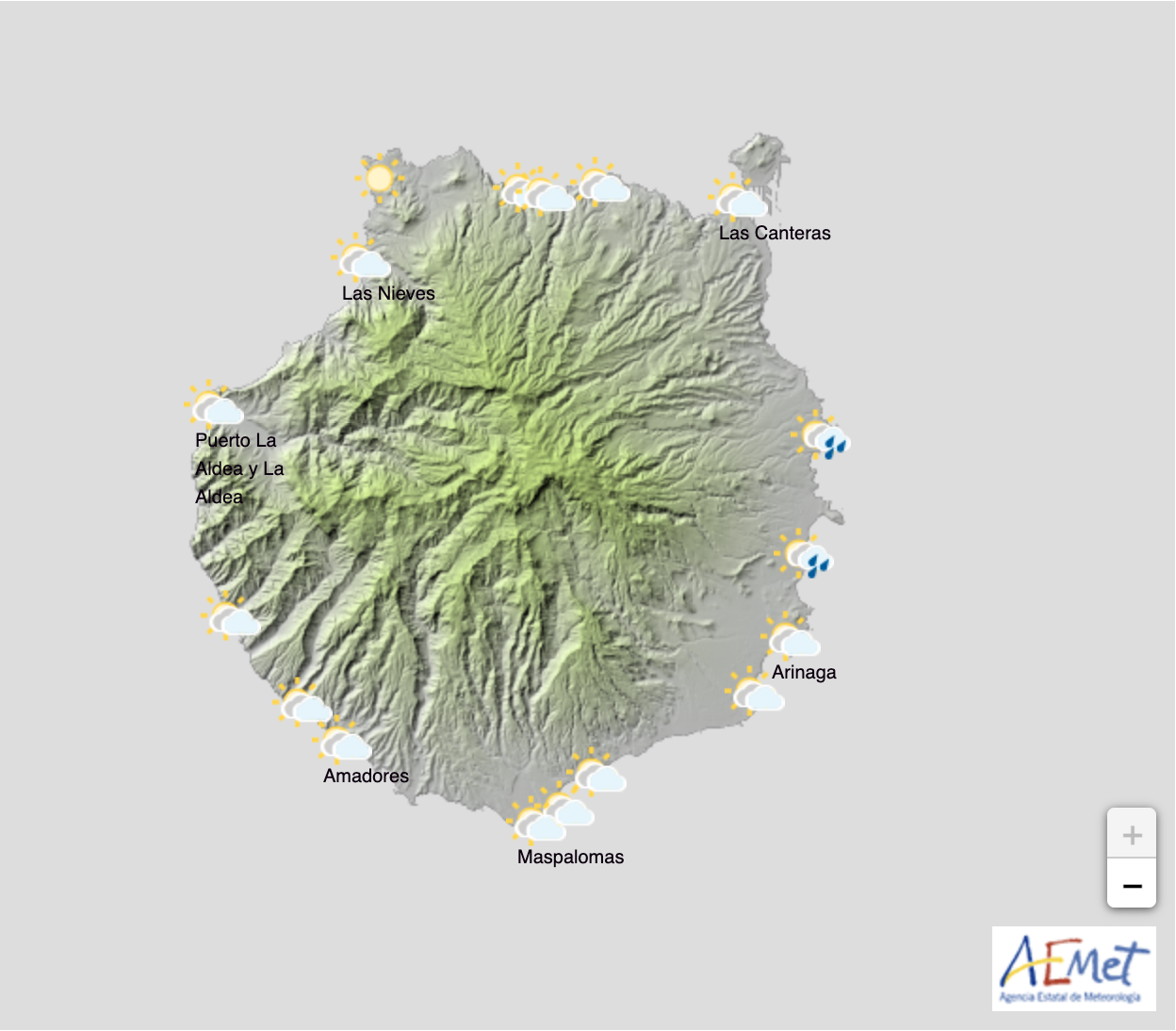The onset of autumn brings with it a slew of astronomical events, including a partial solar eclipse scheduled for this October 14, 2023. The eclipse will be annular, primarily visible in the Americas. However, it will also be partially visible in the Canary Islands, including on Gran Canaria, albeit with very low magnitudes. From the five westernmost Canary Islands (El Hierro, La Palma, La Gomera, Tenerife and Gran Canaria), the eclipse will be barely noticeable since the sunset will occur shortly after its beginning.
Areas with low light pollution, such as the island’s more mountainous regions, may offer the best visibility. Due to the low magnitude of the eclipse on the island, viewers are advised to use solar filters or eclipse glasses for safe viewing.
In the image below you can see the evolution of the eclipse seen from the Canary Islands. The times correspond to the official time. In the tab “From provincial capitals” you can consult the evolution in each of them.

The last solar eclipse visible as partial in Spain took place on October 25, 2022. The next one will take place on April 4, 2024 and will be seen, with a very low magnitude (0.2), in the westernmost Canary Islands and the northwestern Iberian Peninsula. The partial eclipse of March 29, 2025 will be visible throughout Spain.
The next solar eclipse visible as total in Spain will take place on August 12, 2026, followed by another on August 2 of the following year. Shortly thereafter, on January 26, 2028, an annular eclipse will be visible.
The autumnal equinox, last weekend, officially marks the start of astronomical autumn in the Northern Hemisphere. For 2023, it began on September 23 at 06:50 UTC and will last until December 22. The equinox occurs when the Earth’s orbit is such that the Sun crosses the celestial equator, resulting in nearly equal day time and night time durations.
Apart from the upcoming solar eclipse, another notable event on the horizon is a partial lunar eclipse set for October 28. This will be visible in the eastern Americas, Europe, Africa, Asia, and Australia. Meteor showers like the Draconids (peaking around October 8), Orionids (peaking around October 21), Leonids (peaking around November 17), and Geminids (peaking around December 14) will also occur during this autumn season.
Time Change Reminder
Although discussions continue within the European Union about proposals for eliminating daylight saving time changes, no final decision has been made. Therefore, the traditional time change will still occur on October 29, 2023, at 3:00 a.m. local time, when clocks will be set back one hour.













